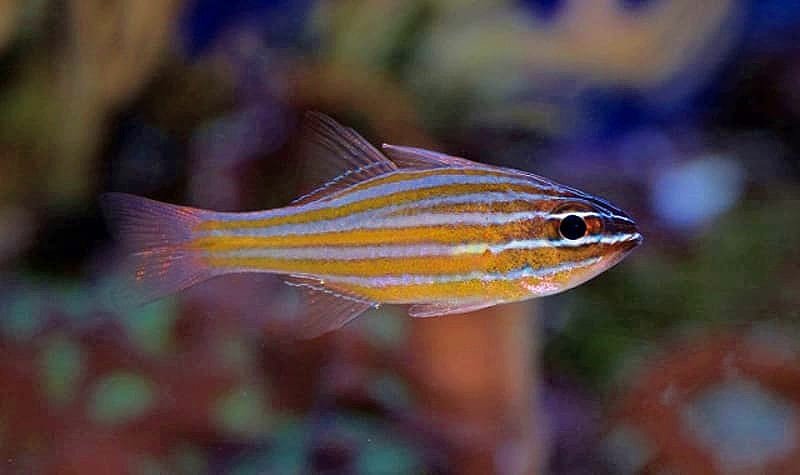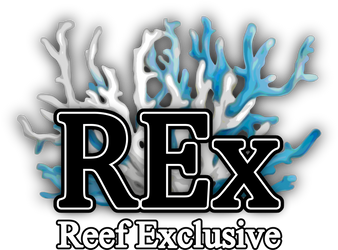
Orange Stripe Cardinal (Apogon Cyanosoma)
Species Name : Apogon Cyanosoma
Care Level : Easy
Temperament : Peaceful
Color : Bluish-Silver, Orange, Yellow
Diet : Carnivore
Reef Compatible : Yes
Water Conditions : sg 1.020-1.025, 72-78° F, dKH 8-12, pH 8.1-8.4
Max. Size : 3 inches
Origin : Indo-Pacific, Red Sea, Australia
Family : Apogonidae
Minimum Tank Size : 10 gallons
Orange Stripe Cardinal (Ostorhinchus Cyanosoma), commonly known as the yellow-striped cardinalfish, goldenstriped cardinalfish, or the orange-lined cardinalfish, is a species of marine fish in the cardinalfish family (family Apogonidae) of order Perciformes.
The Orange Stripe Cardinal has a blueish silver colored body featuring several orange-yellow stripes from head to tail, and translucent dorsal and anal fins. Their eyes and nape fade into a black color. Their body is also a different shape than the traditional Cardinalfish, being long and slender rather than short and taller. The Orange Striped Cardinal is hardy, relatively small, with a maximum size of 3 inches.
A 10-gallon or larger aquarium with a cave and peaceful tank mates is suitable for this slow and methodical swimmer. Best maintained fish-only aquariums with subdued lighting, yet can also be maintained in reef aquariums, with both having several rocky caves/hiding areas. It tends to hide in sea grass or other plants, or may use long spined urchins for camouflage.
This Cardinal is peaceful with other non-aggressive fish, corals and most invertebrates (watch out for small shrimp). Although some species do use aggression to exert dominance, this member of the family Apogonidae does not.
The Yellowstriped Cardinalfish requires a well balanced diet of meaty foods such as feeder shrimp, flake foods, pellet foods, marine flesh, bloodworms, and depending on its size, live feeder fish. Depending upon the environment in which its maintained, the best time of the day to feed are early morning and evening hours.
